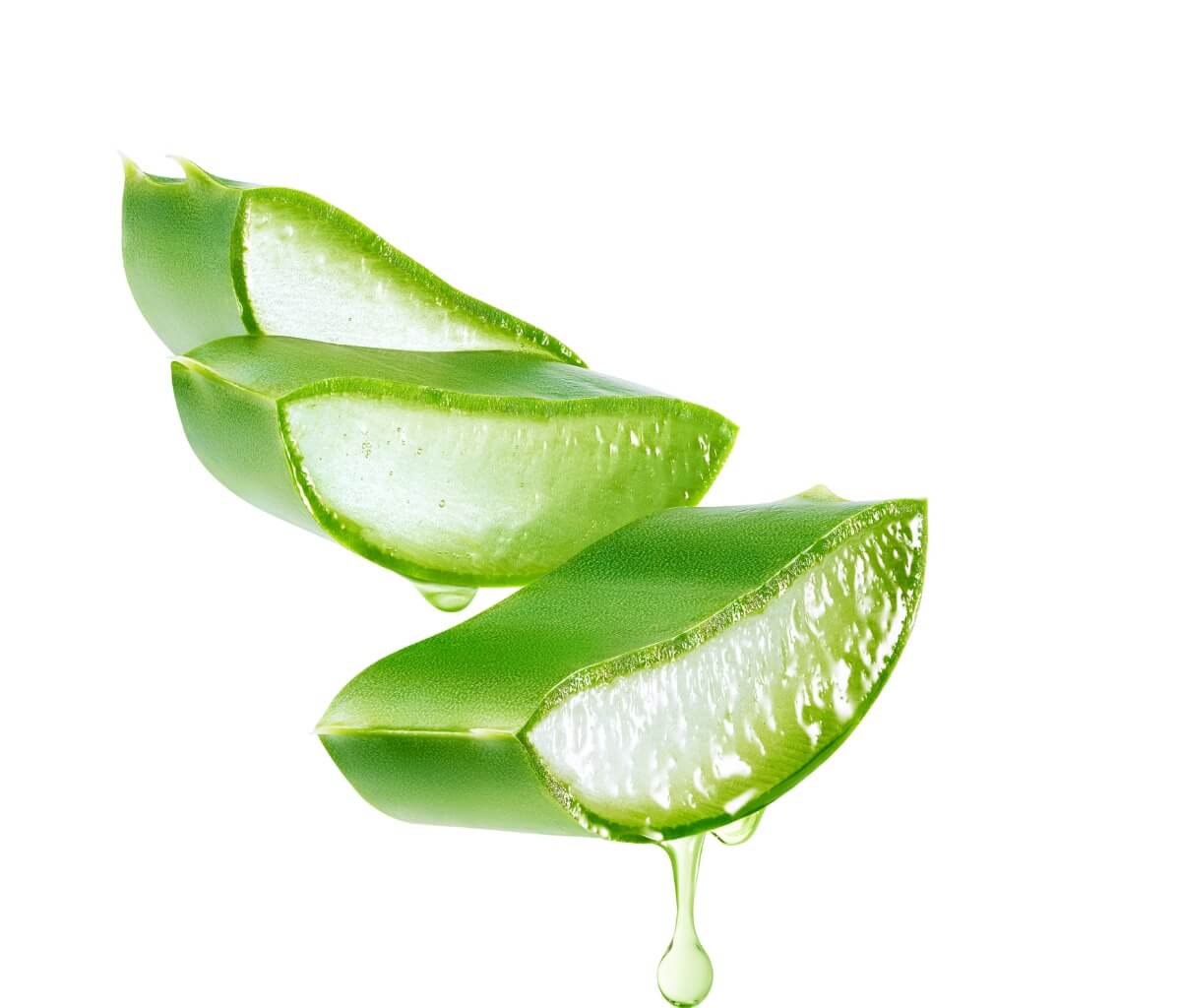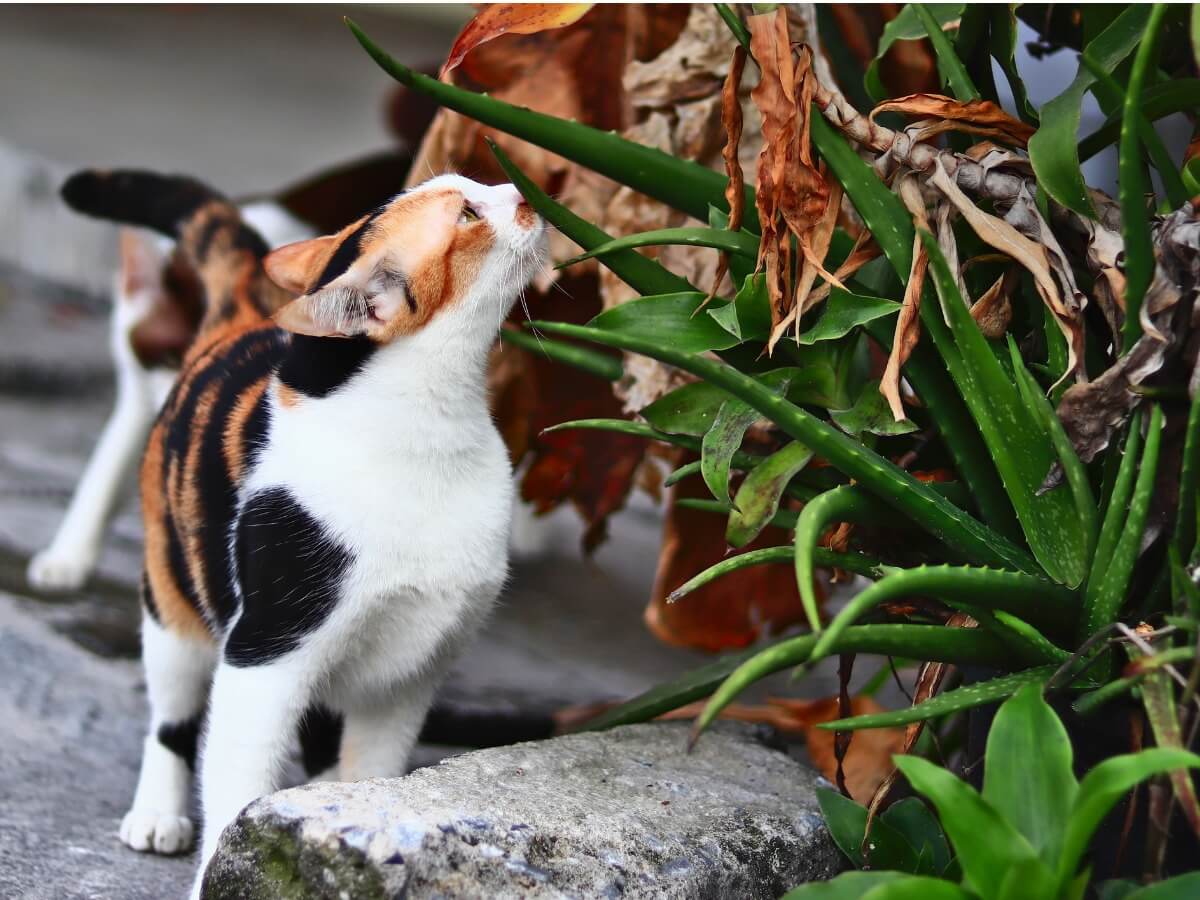Aloe Vera for Cats: Uses and Benefits


Reviewed and approved by the biologist Samuel Sanchez
Some cats love to eat houseplants, and aloe vera is one of them. This plant isn’t toxic to humans, but what about aloe vera for cats?
It’s very common to find this plant in homes, thanks to its health benefits. Both its juice and pulp are used for a wide variety of conditions. However, when it comes to using aloe vera for cats, it’s important to be careful and know how to apply it.
Is aloe vera toxic to cats?
Experts say that this plant is toxic to cats, like many others. Therefore, it should be kept away from them and you should spray it with vinegar so that it doesn’t attract them. If cats consume an aloe plant directly, they may vomit, become lethargic, or have diarrhea.
However, the American Society for the Prevention of Cruelty to Animals (ASPCA) says that aloe vera gel is edible. This applies as long as the yellowish sap or latex of the plant is removed, that is, the part that can have a laxative and toxic effect.
You could even say that aloe gel is essential in a first aid kit. It’s a perfect product to treat dermatitis or skin irritation. In addition, its restorative properties also help in the healing of wounds or burns.
However, we recommend that a professional confirms its use. Even then, you should ensure that the cat doesn’t lick the gel. This is because, in large quantities – like many other substances – it can cause stomach upset, cramps, and intense pain. If you’re going to apply this ointment to your pet, you have to make sure that they can’t reach the area with their mouth.

Contraindications of aloe vera intake for cats
The latex that you need to remove is a known purgative that empties the stomach, causing diarrhea, experts say. Cats that eat too much pure aloe vera – without removing the latex – tend to vomit and defecate more than normal. Cases of diarrhea can be severe and cause such dehydration that the cat has to receive fluids intravenously.
So, if you discover that your cat has eaten an aloe leaf, even just a small piece, wait and check for diarrhea. If you notice that it’s a severe case and the animal’s symptoms don’t improve, then it’s time to call the vet.
Gel benefits
The pulp within aloe leaves contains important and vital nutrients, which can be used to alleviate diseases and chronic conditions. The most important elements in aloe vera are the antioxidant vitamins C and E, and beta-carotene.
Aloe is one of the few plants that contains vitamin B12. In addition, the gel provides 20 of the 22 amino acids that the body needs to stay healthy. Whether consumed by a human or animal, aloe vera improves nutrient absorption and may promote healthy digestion.
Uses for cat fur
You can use the gel both internally and externally – topically or by ingestion. However, if you want to avoid the laxative effect and other complications, it’s better to avoid internal administration.
On the outside, this plant is used as a topical application, but always extracting the yellow latex, otherwise it would be toxic. After cutting the stalk or central nerve of the leaf, place it in pieces over a container with water for 24 hours. In this way, the latex will remain in the liquid and you can separate it from the usable part.
Benefits in cats
Humans aren’t the only ones who can benefit from aloe vera gel. It has anti-inflammatory and pain-relieving benefits, and it can help cats with autoimmune diseases, gastrointestinal disorders, and arthritis. Other benefits can be cited, such as the following:
- Helping cats suffering from skin infections, skin cancer or allergies, in order to alleviate the symptoms of these types of diseases.
- Soothing and softening the skin and eliminating itching and irritation from flea bites.
- Speeding up wound healing and healing while reducing inflammation.
- Protecting against ultraviolet rays from the sun.
You can also find aloe products that support the health of your cat’s coat and skin, to make it cleaner and shinier. When used to enhance a feline’s skin or coat, aloe products are often mixed with omega-3 fatty acids, omega-6 fatty acids, fish oils, and similar marine sources.

In conclusion, we can say that latex-free aloe vera can benefit your cat’s health and increase its quality of life. The gel is the elixir that gives aloe its healthy properties, and is an excellent product for the health of cats and humans.
Some cats love to eat houseplants, and aloe vera is one of them. This plant isn’t toxic to humans, but what about aloe vera for cats?
It’s very common to find this plant in homes, thanks to its health benefits. Both its juice and pulp are used for a wide variety of conditions. However, when it comes to using aloe vera for cats, it’s important to be careful and know how to apply it.
Is aloe vera toxic to cats?
Experts say that this plant is toxic to cats, like many others. Therefore, it should be kept away from them and you should spray it with vinegar so that it doesn’t attract them. If cats consume an aloe plant directly, they may vomit, become lethargic, or have diarrhea.
However, the American Society for the Prevention of Cruelty to Animals (ASPCA) says that aloe vera gel is edible. This applies as long as the yellowish sap or latex of the plant is removed, that is, the part that can have a laxative and toxic effect.
You could even say that aloe gel is essential in a first aid kit. It’s a perfect product to treat dermatitis or skin irritation. In addition, its restorative properties also help in the healing of wounds or burns.
However, we recommend that a professional confirms its use. Even then, you should ensure that the cat doesn’t lick the gel. This is because, in large quantities – like many other substances – it can cause stomach upset, cramps, and intense pain. If you’re going to apply this ointment to your pet, you have to make sure that they can’t reach the area with their mouth.

Contraindications of aloe vera intake for cats
The latex that you need to remove is a known purgative that empties the stomach, causing diarrhea, experts say. Cats that eat too much pure aloe vera – without removing the latex – tend to vomit and defecate more than normal. Cases of diarrhea can be severe and cause such dehydration that the cat has to receive fluids intravenously.
So, if you discover that your cat has eaten an aloe leaf, even just a small piece, wait and check for diarrhea. If you notice that it’s a severe case and the animal’s symptoms don’t improve, then it’s time to call the vet.
Gel benefits
The pulp within aloe leaves contains important and vital nutrients, which can be used to alleviate diseases and chronic conditions. The most important elements in aloe vera are the antioxidant vitamins C and E, and beta-carotene.
Aloe is one of the few plants that contains vitamin B12. In addition, the gel provides 20 of the 22 amino acids that the body needs to stay healthy. Whether consumed by a human or animal, aloe vera improves nutrient absorption and may promote healthy digestion.
Uses for cat fur
You can use the gel both internally and externally – topically or by ingestion. However, if you want to avoid the laxative effect and other complications, it’s better to avoid internal administration.
On the outside, this plant is used as a topical application, but always extracting the yellow latex, otherwise it would be toxic. After cutting the stalk or central nerve of the leaf, place it in pieces over a container with water for 24 hours. In this way, the latex will remain in the liquid and you can separate it from the usable part.
Benefits in cats
Humans aren’t the only ones who can benefit from aloe vera gel. It has anti-inflammatory and pain-relieving benefits, and it can help cats with autoimmune diseases, gastrointestinal disorders, and arthritis. Other benefits can be cited, such as the following:
- Helping cats suffering from skin infections, skin cancer or allergies, in order to alleviate the symptoms of these types of diseases.
- Soothing and softening the skin and eliminating itching and irritation from flea bites.
- Speeding up wound healing and healing while reducing inflammation.
- Protecting against ultraviolet rays from the sun.
You can also find aloe products that support the health of your cat’s coat and skin, to make it cleaner and shinier. When used to enhance a feline’s skin or coat, aloe products are often mixed with omega-3 fatty acids, omega-6 fatty acids, fish oils, and similar marine sources.

In conclusion, we can say that latex-free aloe vera can benefit your cat’s health and increase its quality of life. The gel is the elixir that gives aloe its healthy properties, and is an excellent product for the health of cats and humans.
All cited sources were thoroughly reviewed by our team to ensure their quality, reliability, currency, and validity. The bibliography of this article was considered reliable and of academic or scientific accuracy.
AMVAC. (2020, 14 octubre). Botiquín casero para mascotas: ¿qué debemos incluir? En el veterinario. https://enelveterinario.com/botiquin-casero-mascotas/
ASPCA. (s. f.). Aloe. Recuperado 9 de julio de 2021, de https://www.aspca.org/pet-care/animal-poison-control/toxic-and-non-toxic-plants/aloe
Dat, A., Poon, F., Pham, K. B. T., & Doust, J. (s. f.). Aloe vera para el tratamiento de heridas agudas y crónicas. Cochrane. Recuperado 9 de julio de 2021, de https://www.cochrane.org/es/CD008762/WOUNDS_aloe-vera-para-el-tratamiento-de-heridas-agudas-y-cronicas
Living With Aloe. (2020, 24 febrero). Can I Feed Aloe Vera to My Cat? LivingWithAloe.Com. https://livingwithaloe.com/can-i-feed-aloe-vera-to-my-cat/
Pet Medical Center of Vero Beach. (s. f.). Houseplants You Should Keep Away From Your Cat. Recuperado 9 de julio de 2021, de https://www.petmedicalcenterverobeach.com/houseplants-you-should-keep-away-from-your-cat
University of Wisconsin. (2009, 15 junio). Curiosities: Why do cats seem compelled to eat some plants, like my poor aloe, and ignore others? https://news.wisc.edu/curiosities-why-do-cats-seem-compelled-to-eat-some-plants-like-my-poor-aloe-and-ignore-others/
This text is provided for informational purposes only and does not replace consultation with a professional. If in doubt, consult your specialist.








